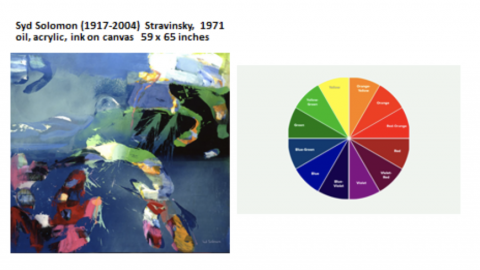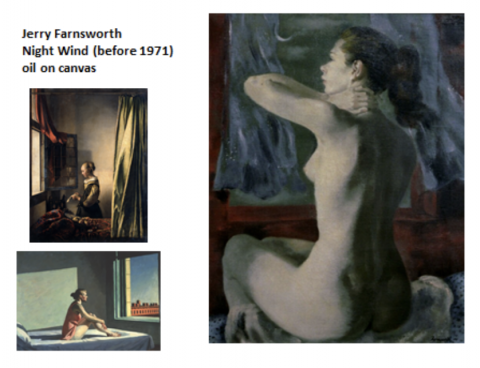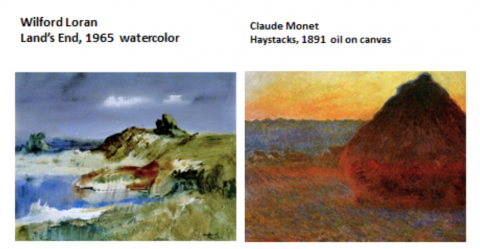What Does a Docent Do?
If you've ever visited a museum or taken a tour while on vacation – and most of us have – then you've most likely been guided by a docent, who was probably a volunteer who served without pay.
You no doubt have wonderful memories of docent guided tours that enriched your experience and possibly other tours that you'd rather forget. Mark Ormond, who advises Arts Advocates and recommends additions to our collection, is also an experienced docent.
In a recent presentation for potential docents to guide tours of Arts Advocates Florida artists' collection, he explained what docents do and how they can help viewers have a more emotional and intellectual experience when viewing a painting or sculpture. He cited works from our collection as examples to illustrate how light, color, form, architecture, and media can influence how we see a work of art. Does the painting or sculpture draw you in by stirring a memory, making you feel happy or sad, or just plain bored?
Audience Engagement
Mark pointed out, "A docent shouldn't be a talking head. He or she must engage the audience, scan their faces and read their body language to gauge their interest and involvement in the work. Ask questions to learn what they're seeing and experiencing. Every time you view a painting or sculpture you see something new that changes your previous perspective and enriches your experience."
A docent should also have a broad understanding of the works and historical significance in order to be prepared to answer questions. Docents need to make a significant commitment of time for training and continuing education. These are the requirements, for example, for docents at The Ringling Museum of Art.
Here are a number of works of art from Arts Advocates collection. Let a painting or sculpture speak to you. What are you seeing? What moves you? What makes you happy? What makes you sad?
Experience These Paintings
To create appealing and seductive paintings artists must understand color theory and be able to mix colors that attract our attention. This is particularly true in an abstract painting. Guided by this color wheel can you find all the colors that Syd Solomon uses in his abstract painting titled Stravinsky.
Humberto Calzada is an artist who understands not only color theory and composition, but also mathematics and physics. He had to create an architectural plan in his head for his composition using geometry and understanding perspective so that we might have the joy of discovering the puzzle of this illusion of space he presents for us on his two-dimensional canvas.
Can you find the perspectival lines and vanishing points in the Calzada painting?
Jerry Farnsworth who created the painting on the right called Night Wind continues a long tradition of painting women looking out of a window in a composition that challenges the artist to balance the light and atmosphere of an interior space with that of an outdoor space. Can you think of what you experience when you are inside looking out a window?
The Arts Advocates Collection includes the watercolor Wilford Loran painted in 1965, called Land's End. It was his impression of the natural site on the bay front that the Van Wezel now occupies. Loran's approach to painting was similar to Monet in that he was not interested in an exact realistic depiction of Nature. Are your memories of nature exact or more like impressions and sensations?
Bruce Marsh who is represented in the collection by his oil painting Amalfi IV uses his own photographs as a reference point for his construction of a painting. He often grids his canvas and chooses to focus on what he observes in small areas of an image to form a large composite image of a place. Do you think you do the same in your mind when you try to remember some place you have visited in the past?
If you enjoyed this brief tour of Arts Advocates collection, then explore our other artists by clicking here. Enjoy!




